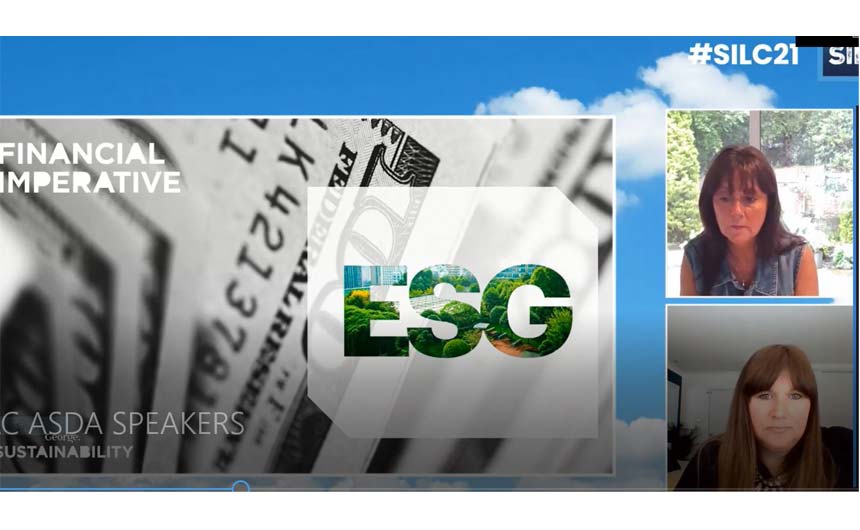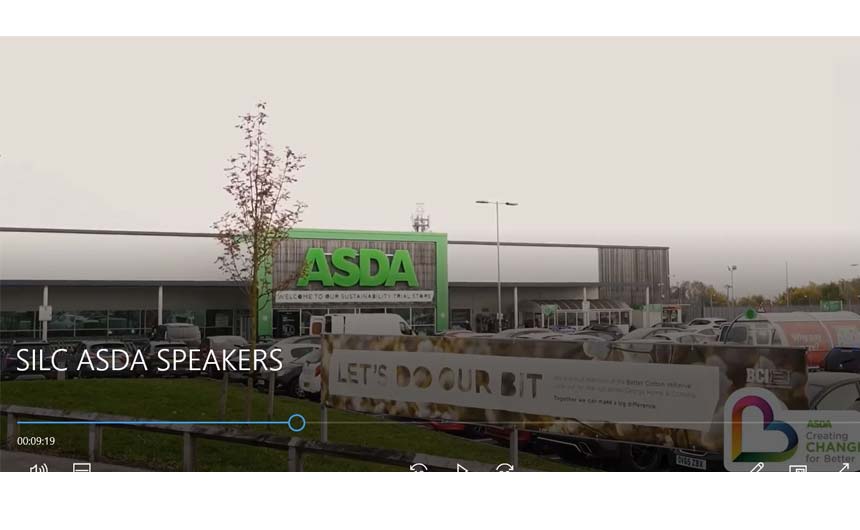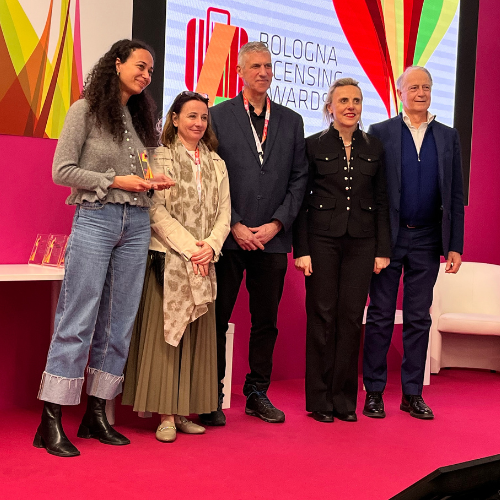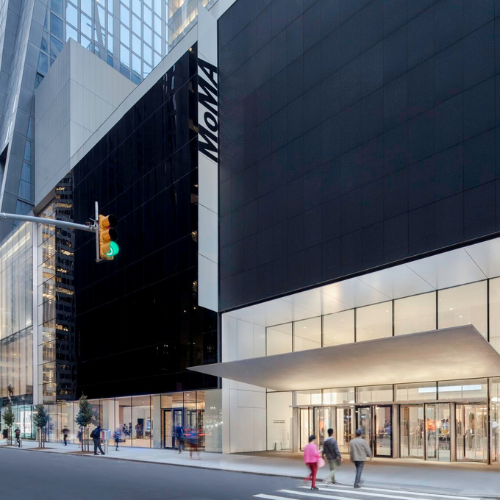“We’re not perfect, we’re still learning. It’s a journey we’re still going on,” Melanie Wilson, who leads strategy and vision for sustainability, global sourcing and quality for George at Asda, tells SILC attendees.
Among the keynote speakers on the first day of the SILC21 conference yesterday (24 June) were Asda’s Melanie Wilson, who leads strategy and vision for sustainability, global sourcing and quality for George at Asda, and Jade Snart, George at Asda’s senior sustainability manager.
Taking a lateral look at sustainability, Mel kicked off her session with a quick run through of some of the stories that have made headlines in recent weeks, to include UNESCO’s view that the Great Barrier Reef should be listed as in danger due to climate change.
“I grew up watching David Attenborough’s phenomenal Life on Earth series, which had 10m viewers at its peak, and even four years ago, would I have thought that David Attenborough would have anything to do with fashion? Would we ever have thought that we would have a young Greta Thunberg influencing world leaders around climate change, or that Boris Johnson would be leading the G7 Summit in Cornwall, proudly saying that his team hadn’t bought any new clothes and that they were all rented?” questioned Mel.
Referring to ‘Dirty Fashion’, she recalled: “That’s the headline we’ve all been faced with since ‘Stacey Dooley Investigates Fashion’s Dirty Secrets’ aired three years ago. Who would have thought that manufacturing clothing would create more carbon emissions than the airline and shipping industries put together?” she highlighted. “The drive around sustainability is phenomenal and it’s dominating the industry and turned our world upside down. And one of the best quotes I’ve heard in the last six months is that ‘sustainability is almost becoming more fashionable than fashion.’
“Following on from the Stacey Dooley programme, and as the UK’s second largest volume retailer, you could say that we are the UK’s second largest contributor to the problem. So, we made a commitment to that we would use our size, scale and leverage to really make a difference. We’re not perfect, we’re still learning, and it’s a journey that we’re still going on. In 2018, we didn’t even have a sustainability team, and only have a small team now, but I’m really proud that three years later we can say that almost 80% of our shop floor is now more sustainably sourced, whether that’s around our fibre policies, or a reduction in plastic, or recycled packaging or just full transparency of not just our first, but our second tier supply chain. We’ve got a great trading team and we couldn’t have done it without our phenomenal supply base.”
Mel emphasised that Asda wanted to ensure that it would drive real change through its different sustainability pillars: better communities; better lives; better planet and better business. “These are the pillars that we are working under to make sure that, as a total business, we are delivering all of our commitments,” she underlined.

Staying with change, she said that one of the biggest changes she has seen in the business over the past 6-12 months has been the move from CSR (corporate social responsibility) to ESG (environmental social governance). “There has been a massive mindset from the financial institutions to really make sure that all of the corporates in the UK have got sound, solid ESG plans.”
She added that in addition, over the past year, there has been a growth in green and environmental bonds, with HSBC becoming the largest green, social and sustainability bond underwriter.

“A few weeks ago, we launched our first ESG report which highlighted that increasingly, we’re going to need really good governance in place so that we can validate the claims that we need to make, whether that’s around fibres, packaging. waste or carbon,” Mel explained. “We will need to ensure that we have the right processes in place for traceability and verification on anything we want to talk about.”
Talking about Asda’s model flagship sustainability trial store in Middleton, which opened last October, she revealed: “It’s had fabulous customer reaction and we are now rolling it out to more stores.”

Elaborating on Asda’s five pillars of sustainability, Jade Snart explained: “In terms of the first pillar, 80% of our shop floor is responsibly sourced, whether that’s responsibility for cotton, viscose or polyester. We know that sustainability is much more than fibres, and we are on a journey to delivering all the other steps, end to end, to be the most sustainable brand possible. The second pillar is around sustainable manufacturing, where we have bolted on our carbon emissions. We know it’s hugely important that as we work through all of our production cycles, and through consumer behaviour, and through our store environment, that we look at the impact on the environment. So this year, it’s about finding out and establishing our base line for carbon emissions – how we can really drive that reduction down going forward to meet our 2030 target.”
The third pillar is about being ethical, with the company’s first and second tier facilities listed on a public website. “We want to take that even further and are on a journey to doing that,” confirmed Jade. Meanwhile, from a packaging and logistics perspective, she admits that packaging is an issue. “However, we have some great solutions for packaging that we can’t remove from our products. For example, they go back into our ‘bags for life’, and as for our hangers, which we know can’t currently be recycled kerbside, we have several solutions for customers to recycle the hangers in-store because we know that facilities are not available in local collections. It’s about looking at how we can be sustainable with everything we do, end to end.”
The fifth pillar focuses on circularity. “We know that keeping clothing in circulation for just nine months longer than the average person would – which is around five wears – reduces that product’s carbon footprint by 30%, which is a crazy amount given how much clothing we produce. As the UK’s second largest volume clothing retailer, we have a duty of care to the planet to offer solutions to customers.”
Jade highlighted three initiatives that George at Asda has been involved with over the past year – a partnership with the Salvation Army, a ‘take back’ scheme with Yellow Octopus and a Pre-Loved Vintage Partnership.
“Our partnership with the Salvation Army offers customers a ‘shop and drop’ solution, where we have collected over a tonne of bric a brac and clothing every single week – compared to 35 tonnes of clothing going into landfill every year,” said Jade, “so that is a great step in the right director. In addition, in March this year, we launched a ‘take back’ scheme in partnership with Yellow Octopus which has been a partner of ours for over 10 years. We developed a platform for customers to not only recycle their old clothing but also to give them an initiative to do so. We’ve had real success with this launch with over 3,000 customers registering on the platforms in our shops. We’ve also had 800 parcels returned. There’s more we can do and we’re hoping to expand the relationship.”
A third initiative has been a Pre-loved Vintage Partnership in Asda’s sustainability Middleton store, focusing on pre-loved secondhand, handpicked vintage clothing. “It’s been so successful that were able to scale it up to further nine stores in December, and at the end of June it will be in a further 40 stores, taking it to 50,” confirmed Jade. “It’s not solving the problem that’s out there, but it’s definitely a solution in the right direction.” To further help to promote the longevity of products, care labels in clothing say: ‘wear me, care for me, share me for a sustainable future’. “We want to push the message that our clothing is great value and made to last,” said Jade.
“Asda’s aim is that we will have zero operational waste by 2025,” emphasised Mel. “We are already a zero waste to landfill business. Some 90% of all our operational waste will be re-used, re-purposed, re-attributed or recycled, and that’s our commitment. The final 10% is pharmaceutical or hazardous waste that needs to be dealt with in a completely different way. Our focus is increasingly about reducing carbon and increasing circulatory, and waste plays an important part in both of those subjects.”

She says that from a top line Asda perspective, the strategy is to eliminate waste where possible. “We make it recyclable where we can, and from a food point of view, we will expand re-use and re-fill, with circulatory becoming a major proposition.”
Coming back to fashion, Mel says that technology will be a good starting point for eliminating waste, facilitating a reduction in the amount of samples being produced. “If you take 3D fit and 3D designs as a starting point, I’ve challenged the quality team that by the end of this year we will be 100% 3D fitting. I know it’s way beyond us this year, but even if we get to 30% or 50%, it will be phenomenal. By reducing sampling, it reduces costs and speeds up our processes. It also reduces our carbon footprint because we, and the samples, aren’t flying around the world, and all of that is a way to eliminate waste. We are also looking at our operating model so that we can produce smaller quantities.”
Added Mel: “None of us are perfect, but with some simple changes we can all make a difference.”
Want to read more news like this? Simply sign up to our daily digest by clicking here. You can also follow @LicensingSource on Twitter and @licensing_source on Instagram.

































